
Human Anatomy Diagrams To Label koibana.info Skin anatomy, Human
The Epidermis The Dermis Hypodermis The number of skin layers that exists depends on how you count them. You have three main layers of skin—the epidermis , dermis, and hypodermis (subcutaneous tissue). Within these layers are additional layers. If you count the layers within the layers, the skin has eight or even 10 layers.

Diagram of human skin layers Charlotte Desire
The human skin is the largest organ of the integumentary system and the outer covering of the body. It is made up of up to seven layers of ectodermal tissue and plays an important role in guarding the underlying muscles, ligaments, bones and internal organs. There are two general types of skin, one is hairy and the other is glabrous skin.
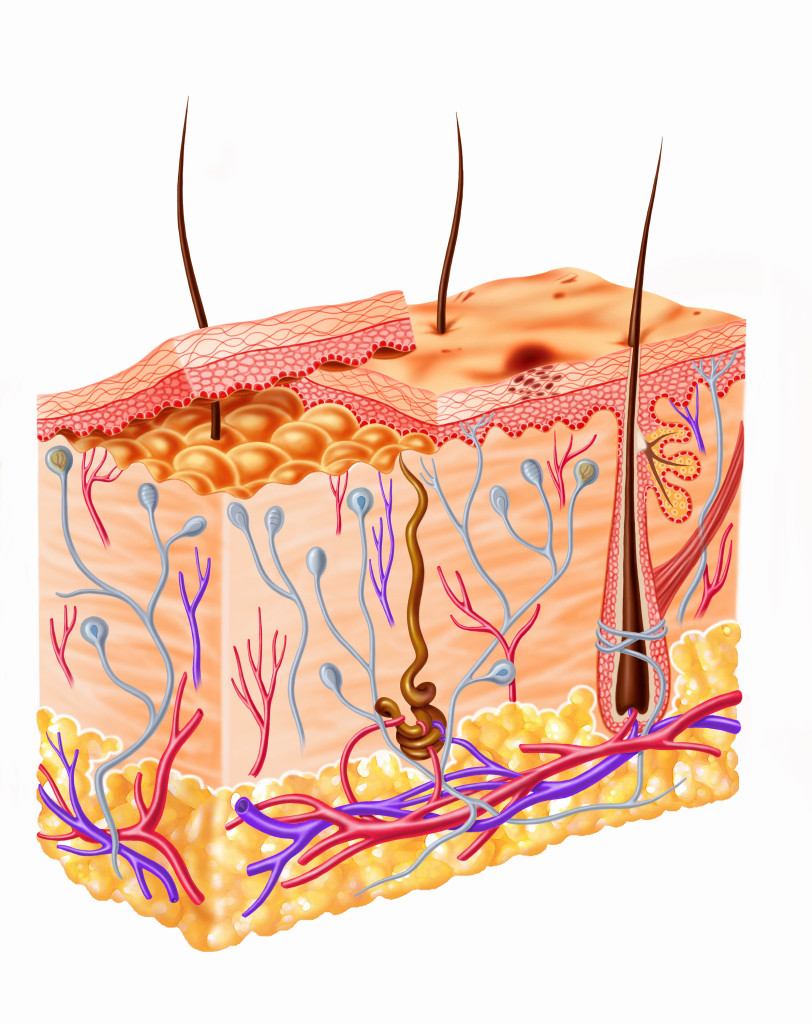
labeled diagram of human skin layers Success
Dermis Hypodermis Epidermis It is the outermost layer of the skin. The cells in this layer are called keratinocytes. The keratinocytes are composed of a protein called keratin. Keratin strengthens the skin and makes it waterproof. Melanocytes that produce melanin are also present in this layer.

Skin Structure Diagram Best Picture Collection
Key facts about the integumentary system; Skin: Functions: chemical and mechanical barrier, biosynthesis, control of body temperature, sensory Layers: Epidermis (Stratum Basale, Spinosum, Granulosum, Lucidum, Corneum) and dermis (papillary, reticular) Mnemonic: British and Spanish Grannies Love Cornflakes Hair: Types: vellus and terminal Structure: Follicle and bulb (shaft, inner root sheath.

Skin diagram labeled
The Epidermis The epidermis is composed of keratinized, stratified squamous epithelium. It is made of four or five layers of epithelial cells, depending on its location in the body. It does not have any blood vessels within it (i.e., it is avascular). Skin that has four layers of cells is referred to as "thin skin."

Cross section anatomy of skin with labels on white background
1/3 Synonyms: none This article will describe the anatomy and histology of the skin. Undoubtedly, the skin is the largest organ in the human body; literally covering you from head to toe. The organ constitutes almost 8-20% of body mass and has a surface area of approximately 1.6 to 1.8 m2, in an adult.

why you may breakout with new skincare products? HydroSkinCare
Skin Diagram The largest organ in the human body is the skin, covering a total area of about 1.8 square meters. The skin is tasked with protecting our body from external elements as well as microbes. Interesting Note:
Skin diagram to label Labelled diagram
The skin is by far the largest organ of the human body, weighing about 10 pounds (4.5 kg) and measuring about 20 square feet (2 square meters) in surface area. It forms the outer covering for the entire body and protects the internal tissues from the external environment. The skin consists of two distinct layers: the epidermis and the dermis.

human skin cells labeled Google Search Subcutaneous tissue, Skin
Dermis. Definition. Fibrous and elastic tissue, provides strength and elasticity to the skin and supports the epidermis, home to hair follicles, glands, nerves etc. Location. Term. Papillary Layer. Definition. Upper dermal layer, provides the epidermis with nutrients and regulates body temperature. Location.

The skin Understanding cancer Macmillan Cancer Support
Figure 1. Layers of Skin. The skin is composed of two main layers: the epidermis, made of closely packed epithelial cells, and the dermis, made of dense, irregular connective tissue that houses blood vessels, hair follicles, sweat glands, and other structures.
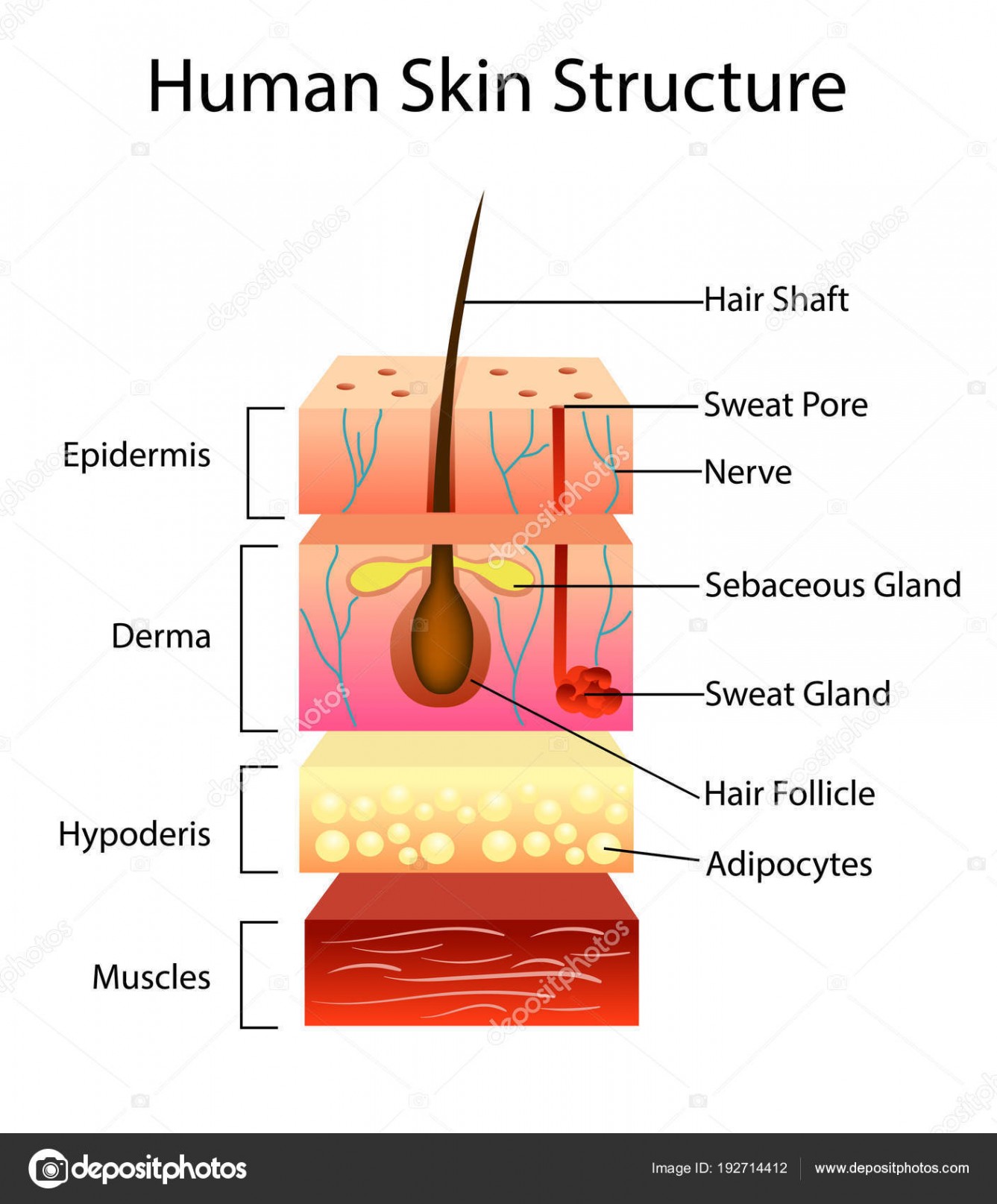
Labelled Pictures Of Human Skin / skin diagram /medical/anatomy/skin
From top, LM × 40, LM × 40. (Micrographs provided by the Regents of University of Michigan Medical School © 2012) The cells in all of the layers except the stratum basale are called keratinocytes. A keratinocyte is a cell that manufactures and stores the protein keratin.
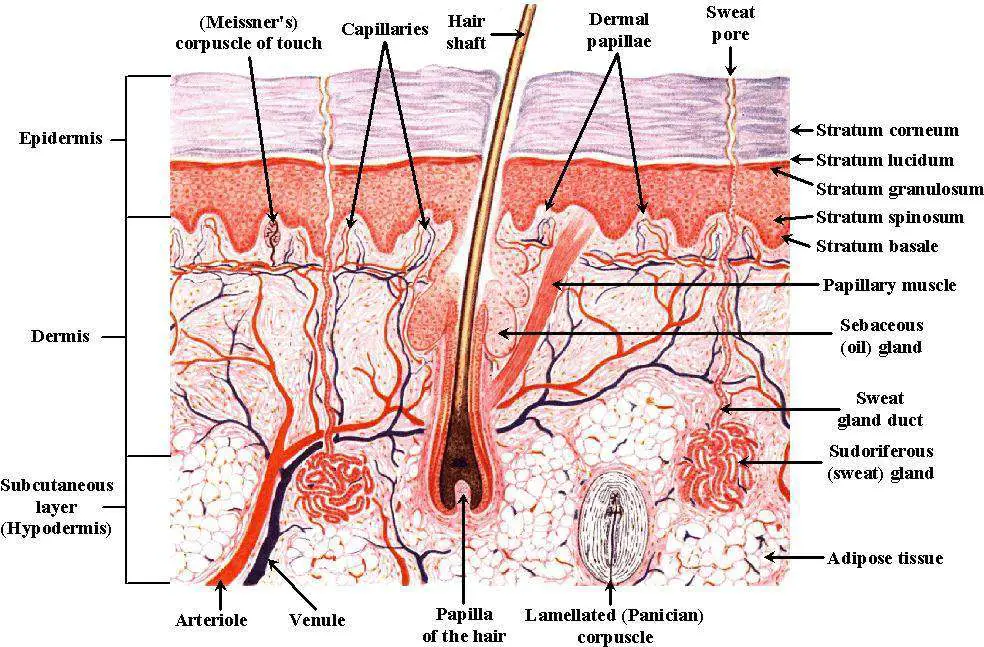
Skin diagram labeled
The skin is the body's largest organ. It covers the entire body. It serves as a protective shield against heat, light, injury, and infection. The skin also: Regulates body temperature. Stores water and fat. Is a sensory organ. Prevents water loss. Prevents entry of bacteria.
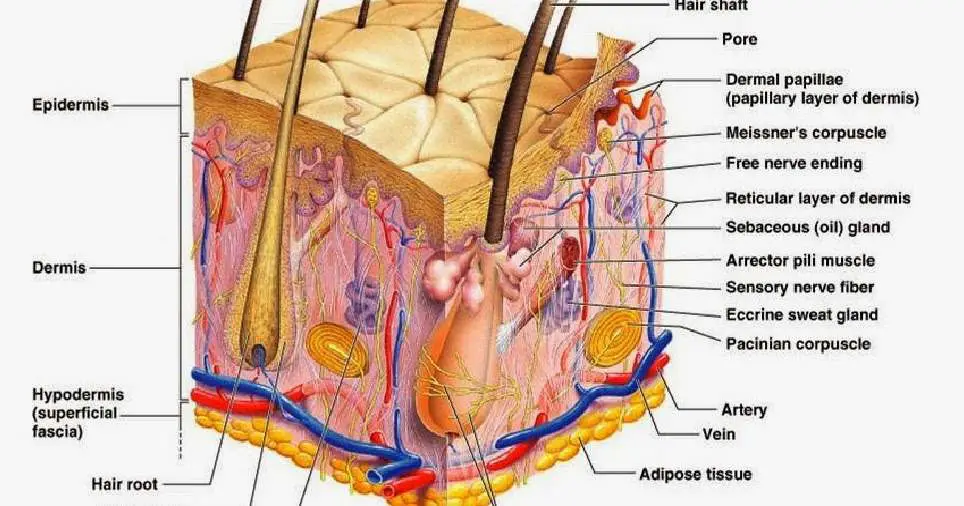
Skin diagram labeled
Skin. As the body's largest organ, skin protects against germs, regulates body temperature and enables touch (tactile) sensations. The skin's main layers include the epidermis, dermis and hypodermis and is prone to many problems, including skin cancer, acne, wrinkles and rashes. Contents Overview Anatomy Conditions and Disorders Care.
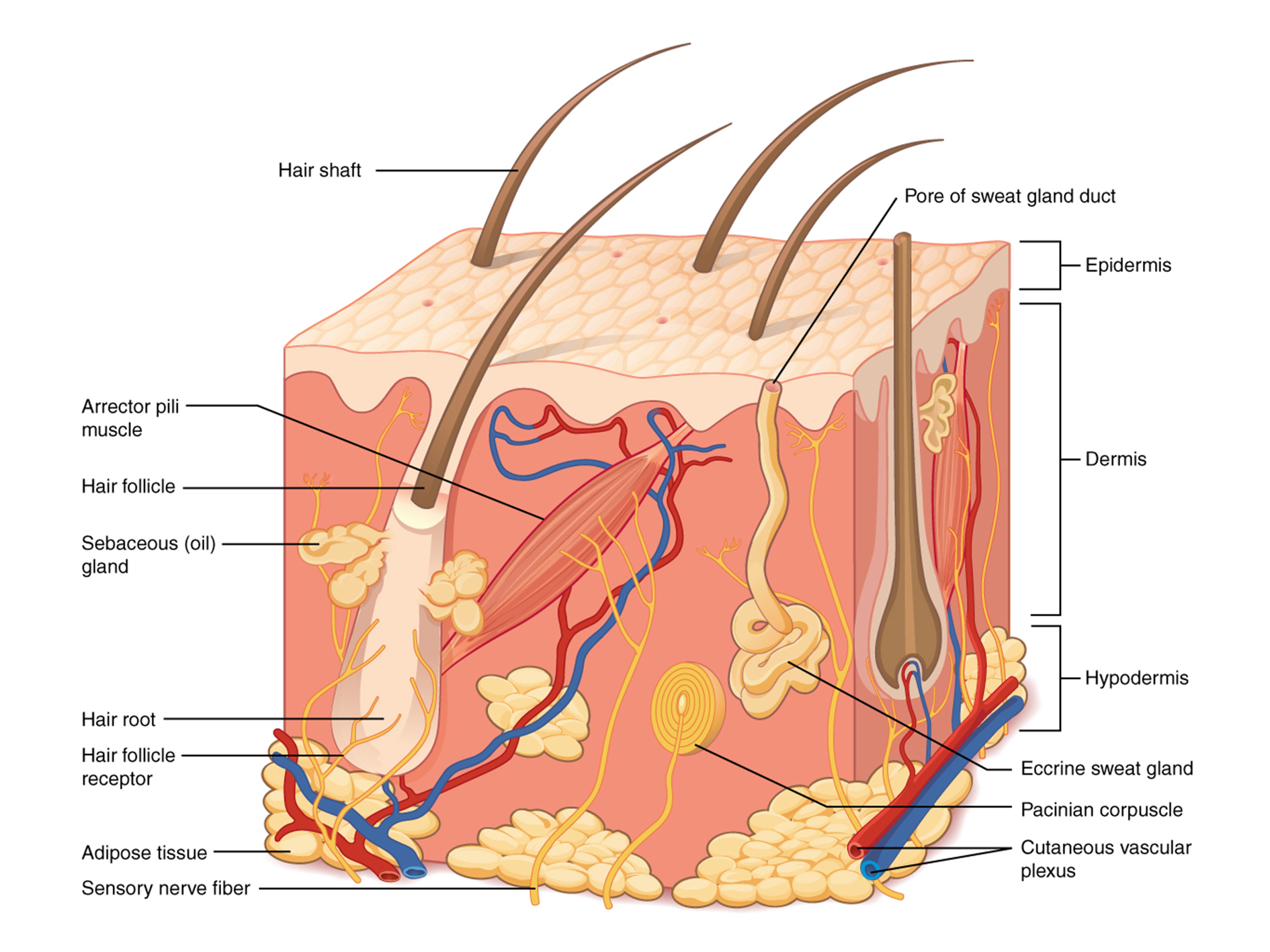
POSTECH UNIVERSITY DEVELOPS 3D BIOPRINTING TECHNIQUE THAT GROWS HUMAN
Epidermis Dermis Subcutaneous fat layer (hypodermis) Each layer has certain functions. Epidermis The epidermis is the thin outer layer of the skin. It consists of 2 primary types of cells: Keratinocytes. Keratinocytes comprise about 90% of the epidermis and are responsible for its structure and barrier functions. Melanocytes.

Skin Diagram Labeled
seborrheic dermatitis (dandruff) atopic dermatitis (eczema) plaque psoriasis skin fragility syndrome boils nevus (birthmark, mole, or "port wine stain") acne melanoma (skin cancer) keratosis.
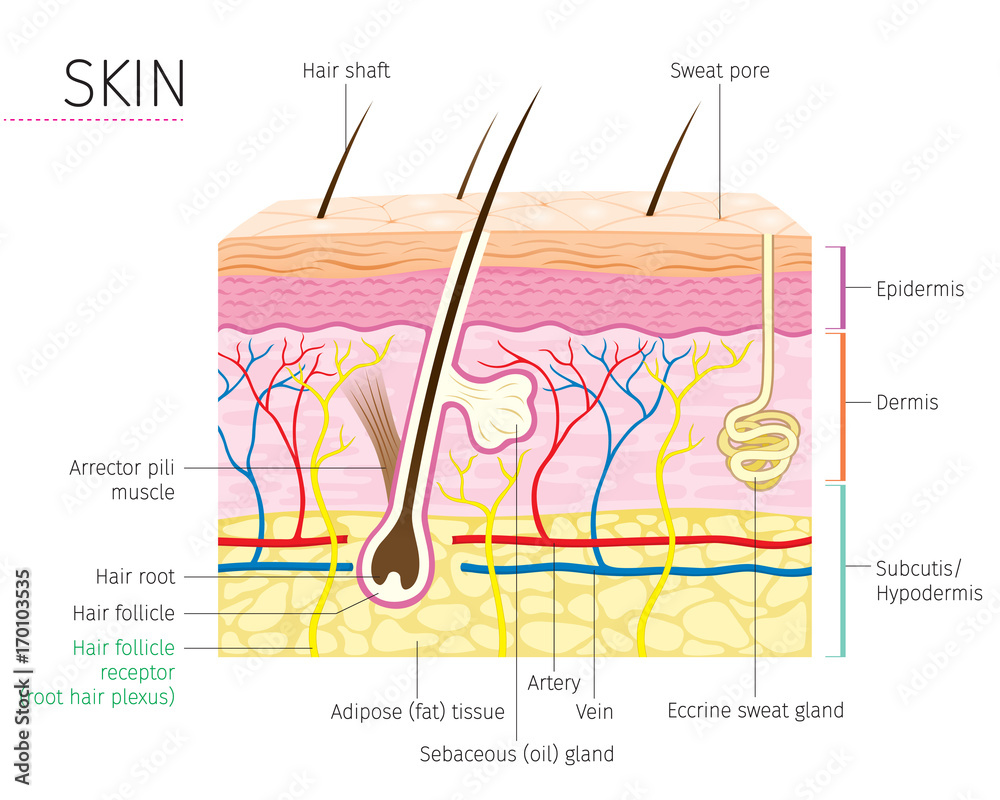
Skin Diagram Labeled
The skin is the body's largest and primary protective organ, covering its entire external surface and serving as a first-order physical barrier against the environment. Its functions include temperature regulation and protection against ultraviolet (UV) light, trauma, pathogens, microorganisms, and toxins. The skin also plays a role in immunologic surveillance, sensory perception, control of.